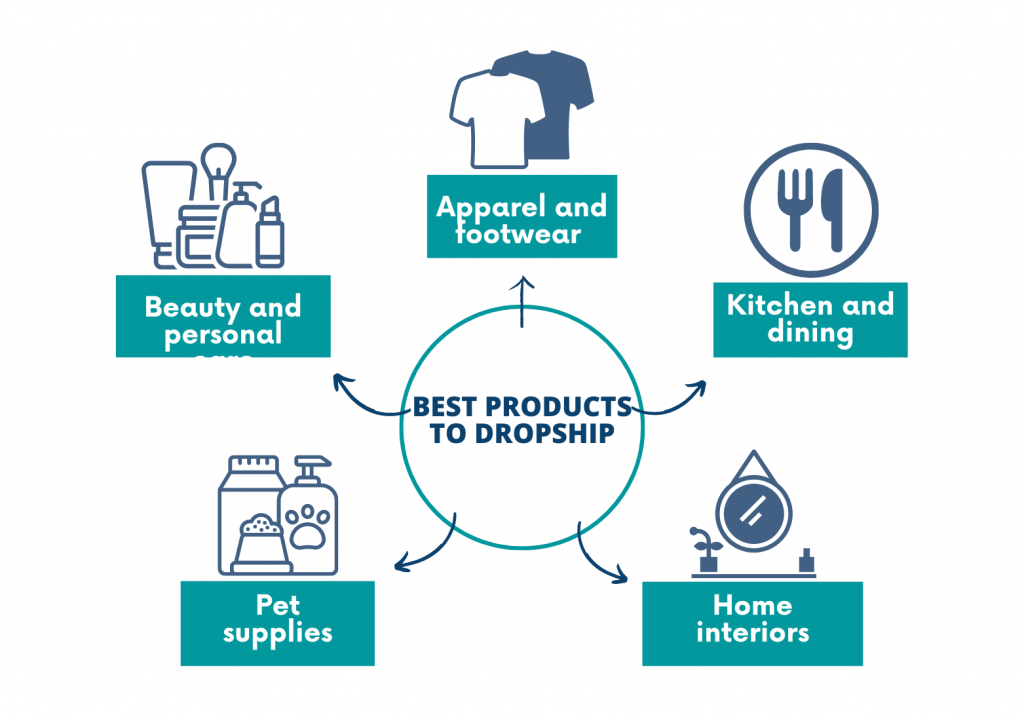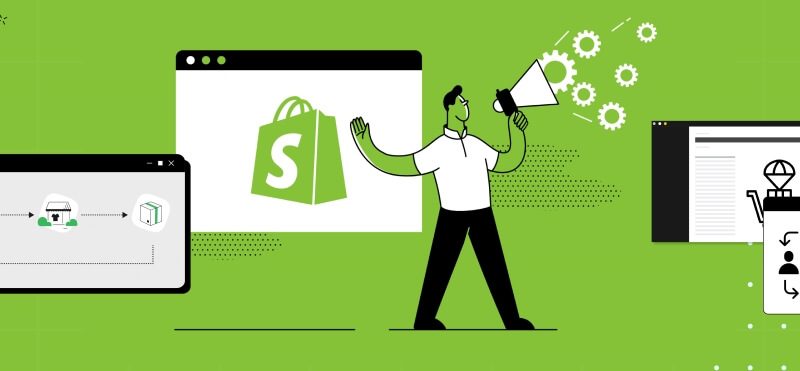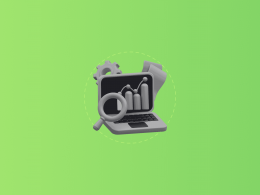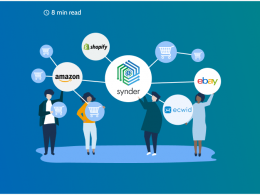Shopify dropshipping is a popular e-commerce business model that allows anyone to sell physical products without having to own any stock. It’s ideal for entrepreneurs who are looking to start a Shopify store with limited capital, want to test a product before investing in it, or for those who already have an e-commerce store and now want to test different strategies.
⬇ Turn your vision into reality ⬇
Unlock the secrets to a successful Shopify store with our exclusive guide. Get it here!
In this guide, you’ll find answers to the following questions:
2. What is Shopify dropshipping?
3. How does dropshipping work for Shopify?
4. What are the benefits of dropshipping on Shopify?
5. How to start a dropshipping business on Shopify
6. Tips for dropshippers to follow
7. Should you consider dropshipping with Shopify in 2025?
Whether you’re just getting started or have been at it for a while now, read on for a complete overview of Shopify dropshipping!
What is Shopify?
Shopify is the leading multinational e-commerce platform that allows an entrepreneur to launch their own online store and start promoting, selling and shipping their physical or digital products. The platform also sells retail point-of-sale (POS) software products which can be used in offline shops.
Store owners all over the world choose Shopify because it’s easy to use and doesn’t require any technical background – you can create your own store and start your dropshipping business from scratch even with no technical experience.
What is Shopify dropshipping?
Shopify dropshipping is a way of starting an e-commerce business with less risk of losing money. It’s a business model that allows you to sell physical products that are manufactured, warehoused, and shipped by third-party dropshippers from your own online store. Basically, you don’t produce or store anything, you just sell.
Instead of purchasing inventory upfront, this option allows you to order products from a wholesaler on demand. When a customer places an order in your Shopify store, you simply order the product from the wholesaler, and they ship it directly to the customer’s address. This saves you the trouble of managing, storing and moving inventory and allows you to provide your customers with products on demand.
Imagine you sell swimwear in your Shopify store. A swimsuit from the latest collection costs $20 on your supplier’s website. You like it and list this product at $50 in your store. If the customer purchases this swimsuit, you place an order with your supplier and transfer the necessary customer information. The supplier then delivers the swimsuit to your customer with the name of your brand on it. As simple as that!
What’s more, it saves you money. For example, if a specific product doesn’t sell, you don’t need to worry about moving a large amount of pre-purchased inventory. It also only requires you to have an Internet connection and a device, which makes it a great way to run a Shopify e-commerce business on the side, or in a way that is flexible and works for you.
How does dropshipping work for Shopify?
Shopify dropshipping is an ideal business model for first-time-entrepreneurs. But how exactly does it work? Let’s look at how the dropshipping flow works at Shopify.
Step #1. Placing an order on your Shopify store
A customer places an order and pays for the products on your Shopify store.
Step #2. Contacting your supplier
You transfer the order and shipping information to your supplier. As you aren’t responsible for picking, packing or shipping physical products, it’s essential that you have a reputable supplier who you trust and can rely on to provide the service that you advertise.
Step #3. Getting billed
Once your supplier receives the order, you’re billed for the products ordered.
Step #4. Paying for the services
You pay your supplier – this usually includes the product cost at a wholesale price plus a dropshipping fee.
Step #5. Delivering the products
The supplier packages and ships the products directly to your customer.
Shopify’s dropshipping flow is simple – you just select the products you wish to sell in your store and have the supplier take care of the rest!

What are the benefits of dropshipping on Shopify?
Shopify is one of the most popular e-commerce platforms for merchants. And for good reasons:
- Shopify is an all-in-one solution with a great set of functionalities for e-commerce businesses. There’s no need to go through all the steps when you create your dropshipping business – Shopify covers everything and even lets you use third-party apps to improve the performance of your store.
- Shopify is easy to use for both experts and newbies. The platform is user friendly and has good customer support.
- No upfront investment is required. When launching your own dropshipping business, you can start a store within hours without any upfront investment.
- No worries about inventory. As you don’t manufacture any products or purchase products in bulk, you don’t have excess inventory. The amount of products equals your customers’ demands and you order a product only when an order is placed.
- No shipping costs. Since you don’t ship anything yourself (just order products from wholesalers), shipping costs are nonexistent.
Dropshipping with Shopify saves you time, space and money — leaving you with more energy to focus on growing your business!
How to start a dropshipping business on Shopify
To establish an effective Shopify store and ensure your dropshipping business is profitable, you might want to consider taking several necessary steps.
Step #1: Find a niche in which you want to dropship and think about your target market
- Do your research and find a product in demand that you genuinely want to sell. If you don’t feel passionate about what you sell, it might be hard to make your business successful.
- Make sure that the product you want to sell in your store is profitable. Run the numbers for an item to calculate your costs and profits.
- Figure out who your potential customers are. Learn where they live, what they do, what their pains and desires are, how they think and what triggers them to buy. Make sure that they really need the product you want to sell.
Competition might be tough, so weigh the pros and cons of selling your product on your Shopify store.
📌 While calculating profitability, you might want to calculate unit economics for your item. Check out our articles ‘What Are Unit Economics and Why Do They Matter for Your Business?’ and ‘The Unit Economics of a T-Shirt: Economics of One Unit Explained’ to have a thorough understanding of the concept.
Step #2: Look through dropshipping apps to find a suitable one for your store
Dropshipping apps are third-party tools that allow Shopify merchants to customize their business, add necessary features, and consequently add value to their customers. Typically, such apps act as the middleman between an e-commerce store and its customers.
There are many dropshipping app extensions available at Shopify’s app store. It also has other solutions you might need to run your dropshipping business more efficiently – email automation and remarketing tools, CRMs, social selling apps, shipping apps, just to name a few.
However, what you need to take care of first is finding the right vendor app for your dropshipping business. There are a lot of options, but let’s have a look at the most popular ones.
Oberlo – a dropshipping app designed for Shopify
Oberlo is Shopify’s dropshipping app which was specifically designed for the platform. Naturally, it’s the default dropshipping tool with seamless integration to your Shopify account.
Oberlo has a number of useful features:
- Your dropship products can be added straight to your Shopify store thanks to easy and intuitive import. For example, you can directly import a product from AliExpress and start selling it on Shopify.
- There’s no need to worry about inventory as Oberlo fulfills your Shopify orders directly. You also get automated inventory updates for your store. You always know what you have in stock.
- You get access to product customization. Oberlo users can rename products, modify product descriptions, change images, etc. You can make sure that product descriptions match the tone of voice of your store and images are true to life.
- Prices are managed automatically. Set up product pricing rules and enjoy automated pricing. You can even update prices in bulk!
- You can track shipping of your products. You and your customers have access to shipping information, such as shipping time and current location of a product.
- The tool supports multiple users which allows for team work while running your store, and works with multiple currencies and languages.
🔎 Does Oberlo support any other platforms?
No, it doesn’t. Shopify is the only e-commerce platform you can use this tool on.
Modalyst – automated popular brands dropshipping
Modalyst is an automated dropshipping platform that specializes in well-known brands. The tool handles routine operations for e-commerce businesses while offering a wide range of premium products which can be shipped around the globe.
Modalyst’s key features allow you to:
- Work with handpicked suppliers in the US and EU who meet strict return, shipping, and pricing requirements pre-negotiated by the company.
- Get pre-negotiated sales rates to save time while working out a deal with your supplier.
- Manage everything from a single dashboard. No more juggling different tabs – your orders can be handled from one system.
- Add products from the Modalyst marketplace to your dropshipping store with one click.
- Edit product names and descriptions.
- Sync inventory and pricing automatically in real time.
- Ship anywhere fast. Shipping details are sent to you automatically so you can track your product at any point.
- Make use of a universal returns policy that works for everyone.
🔎 Can my e-commerce business have access to Modalyst’s entire network of suppliers for free?
No, it can’t. Your business has to upgrade to Pro or Business premium plans in order to access the supplier network.
Spocket – global dropshipping for e-commerce businesses
Spocket is an app which allows e-commerce businesses to dropship trendy products from 50+ categories from U.S., European, Canadian and Australian vendors.
Spocket boasts the following features:
- It offers high-quality dropshipping products from global suppliers who are selected over the course of strict evaluation.
- Order fulfillment process is automated all the way through. You can dropship in one click.
- Inventory is managed and updated automatically in real time.
- Products are imported quickly and easily with no manual work involved.
- Shipping is fast and can be tracked at all times.
- The tool offers 30 to 60% profit margins for dropshipping with the platform.
Printful – print-on-demand model dropshipping
Printful is a dropship solution which allows your business to operate on a print-on-demand model. It lets you customize products with your own designs.
Printful’s key features:
- Easy access to big consumer markets with warehouses in Europe and the U.S.
- No monthly fees to use the dropshipping service. You pay fees only if you sell an item.
- No inventory costs involved.
- Fast shipping at good rates. On average, products are delivered within 3 days.
- Automatic order fulfillment.
- Great variety of customization options.
- Guarantee policy. Lost or damaged products are replaced.
Check the full list of apps and more tips on running a Shopify business in our blog post ‘30 Best Shopify Apps to Increase Sales and Maximize Your Profits’
Step #3: Create your Shopify store and start dropshipping
The most essential step when setting up Shopify for dropshipping is actually opening a store with Shopify.
Launching a dropshipping business with Shopify is easy and the process of installation is quite simple. You need to do the following:
- Create a Shopify account;
- Connect your dropshipping apps;
- Add products you’d like to sell;
- Design your store and customize the way it looks. Check out Electro theme for the best performance and customization options ;
- Set up payment methods;
- Go over settings, policies and rules your store is going to follow;
- Select a Shopify plan that best fits the needs of your business;
- Launch your store.
📌 Check our detailed guide ‘How to start a successful Shopify store’ for more info.
Tips for dropshippers to follow
Dropshipping might seem easy at first as it doesn’t involve handling inventory and shipping. However, there’s still a lot of work if you want your store to succeed. Vendors, Suppliers, customers, traffic and sales consistently require your attention.
Here are some tips for dropshippers that will help you take your experience with dropshipping to a new level:
1. Keep communication channels with your vendors and suppliers open
While there are apps that make sure there’s no direct communication with your vendors and suppliers as you can add products to your Shopify store through them, in some situations, you’ll still have to contact them. You might need, for example, a custom logo or additional photos of a product. Make sure your business is open for communication.
2. Think about products returns and refunds rules as early as possible
Sooner or later, any e-commerce business has to think about rules governing returns and refunds. They’re the necessary evil, as they can save you lots of time and effort if created before you launch your store. Not all suppliers and dropshipping vendors accept returns, but all of them have specific policies. Check with your dropshipping providers, decide how you want to deal with returns and refunds and create your own policy. Dropshipping should be well thought-out.
3. Provide customer support to ensure excellent customer experience
Outsourcing inventory management and order fulfillment in general doesn’t mean you don’t have to deal with customers. They buy products with your brand name on them, and they might have questions and issues. It’s time to think about customer service.
Typically, you’d want to have chat or phone support, email address for inquiries, FAQ section and someone to handle comments and DMs on social media accounts. To enhance customer support, consider hiring a freelance developer to build a custom chatbot or virtual assistant using AI-based LLM LangChain tools.
Not engaging with customers might badly affect your sales. When there’s no opportunity to clarify and resolve issues, customers are likely to lose interest and shop somewhere else.
4. Market your store to make it more sustainable and lucrative with time
Once you’ve launched your Shopify dropshipping website, it’s time to promote your store. Marketing your business involves spending some time and money on:
- Search Engine Optimisation (SEO). Search engines won’t return your store in results if you don’t optimize it. Obtaining traffic is time-consuming. Ranking your website for valuable keywords takes at least several months of meticulous work. Find an SEO specialist to help you master optimization and come up with SEO and content strategy development.
- Content marketing. To boost your SEO rankings, your website needs to provide users with useful content. Create content that educates, informs and addresses the needs of your target market. Good content takes time, but if you’re planning to grow your dropshipping business in future, it’s worth your while.
- Social media marketing. Social media is the best way to let the world know about your Shopify store. Don’t forget that Shopify offers seamless integrations with Facebook and Instagram. With a solid social media presence, your business is sure to succeed. Additionally, using professional video editing software can elevate your social media content, allowing you to create captivating videos that effectively showcase your products and brand story.
- Influencer marketing. If you have a budget and succeed to identify the right influencer with a wide following, your sales may skyrocket! However, make sure that your return on investment is worth it.
- Email marketing. While dropshipping on Shopify, don’t forget to build an email list to promote your products and store. With a good customer base, your newsletters, special offers, etc. result in additional sales. Shopify’s app store has a number of top-rated email marketing solutions, just pick the one that answers your needs.
- Google Adwords and Facebook Ads. Paid ads allow your Shopify store to reach people who are searching for your products and give your store necessary exposure on Facebook or Instagram.
5. Take care of your finances with automated software
Finally, for dropshipping as for any other business, it’s important that you have your finances in order. Utilizing automated accounting software such as Synder will ensure you have everything in order come tax season and can confidently plan for the future of your store. Connect your payment platforms and Shopify to Synder, and enjoy the magic of automated finance management!
Synder makes accounting for your Shopify store easier and worry free. The solution offers the features your e-commerce store needs so much:
- It’ll automatically synchronize online transactions from your Shopify store, and take away the pain of manual data entry. Transactions are recorded with the highest level of security and attention to detail so that you can save hours of work on reconciliation.
- Key accounting reports – P&L and balance sheet – are generated automatically and in a matter of seconds. What’s more, Synder Business Insights will help your e-commerce business scale and grow with a set of detailed customizable reports on a number of KPs based on actual data from your payment and sales platforms. Financial data review can be done in one place and in a few clicks.
- If your dropshipping store sells internationally, you’ll be pleased to know that Synder handles multicurrency transactions just as smoothly as transactions in your home currency.
Synder offers a variety of features that allow you to manage your Shopify finances and have a clear overview of your incomings and outgoings. It simplifies one of the most overwhelming aspects of entrepreneurship, and saves you time to focus on promoting your dropshipping store and planning the next steps of your e-commerce business.
Start our free 15-day trial or schedule office hours with our specialists to find out how easy managing finances for your Shopify dropshipping business can be!
Should you consider dropshipping with Shopify in 2025?
Dropshipping with Shopify, like other e-commerce platforms, has some definite advantages, but there are also some pitfalls you need to be aware of. What’s more, the features which actually make Shopify dropshipping stand out may become problematic.
- Tough competition
As it’s pretty easy to create an online store on Shopify and start dropshipping, it inevitably leads to tough competition and lower profits (in some cases). Stores may even sell the same products, so they might try to minimize pricing to attract customers.
- Inventory issues
You literally have no control over inventory. It might become an issue in situations where, for example, you’re working with a supplier who provides products to other stores. Supplier issues aren’t always reflected automatically.
- Shipping complications
Shipping might become complicated and more expensive. If you’re working with multiple suppliers, each of them may charge a different rate for delivering a product to a customer. The customer might order three products from different suppliers, and you’ll have to cover the majority of shipping costs. These amounts add up and might make the product unprofitable.
- Order fulfillment failures
Order fulfillment and shipping are also main reasons why customer support is so challenging in dropshipping. Although you don’t control them, you have to deal with customers if something happens. And we all know that mishaps are part of e-commerce business.
The good news is that most of these issues can be resolved by planning and strategic thinking. Starting a Shopify dropshipping store should begin with thorough research and strategic analysis, which give you a clear picture of the market. Shopify dropshipping business is profitable and sustainable when it’s well-thought-out.
Conclusion
Dropshipping is a business model allowing you to sell products online with the help of a supplier who handles inventory and delivers orders to your customer on behalf of your store. This model is a viable opportunity for entrepreneurs starting their e-commerce businesses. It’s one of the best ways to sell products without having to carry any inventory and doesn’t require a high upfront investment.
When you consider dropshipping, Shopify is probably the first platform that comes to mind. It’s an all-in-one solution that’s easy to set up and use. Moreover, it allows for automated accounting as it integrates with several accounting solutions. With Shopify, you need as little as creating an account, setting up a store, and finding a supplier. Dropshipping apps can help with finding suppliers and ensuring efficient logistics. You might want to do some research, but as soon as you’re done with these steps, you’re ready to nail dropshipping.







.png)

Thank you for sharing such a useful Post. I really appreciate your efforts.
Embark on a Dropshipping Journey with Shopify! Synder’s blog post is your comprehensive guide to kickstarting your dropshipping venture on Shopify. From setting up to sourcing products, this read equips you with step-by-step instructions for a successful start. A must-read for entrepreneurs ready to dive into the world of e-commerce and dropshipping.
Thanks, Hazel, for your feedback! We’re doing our best to provide you with comprehensive pieces.
very useful stuff i am going to start drop shipping on Shopify!!! say good luck to me.
Very best of luck!
Thanks, now I know from where to start.
Hi Faustin, that’s great, very best of luck!